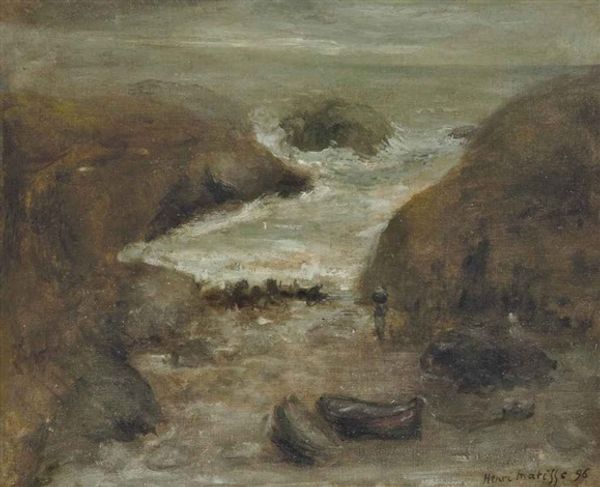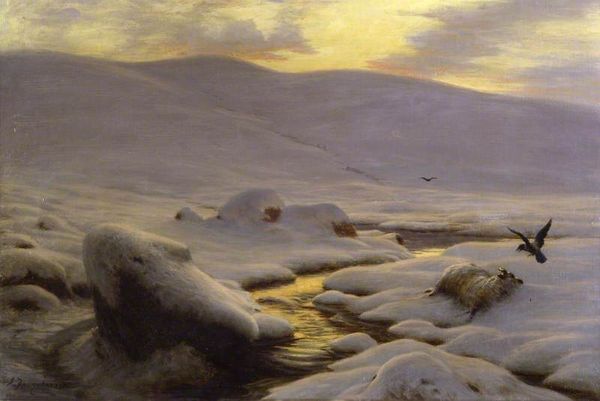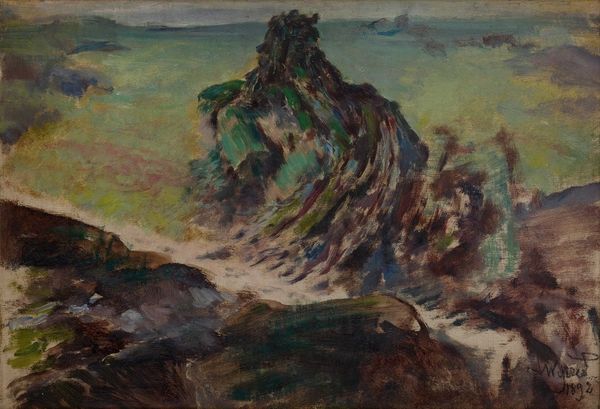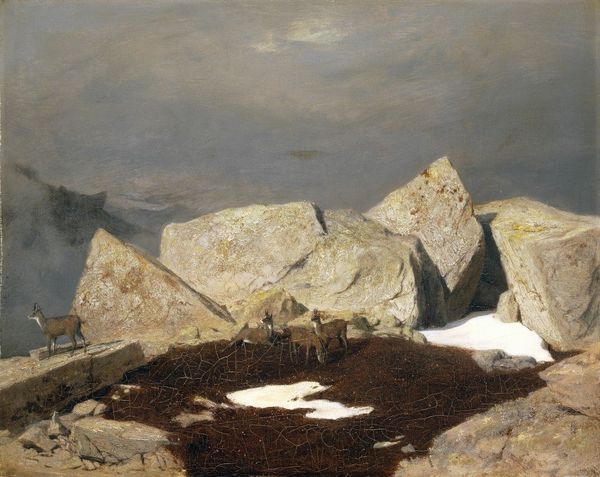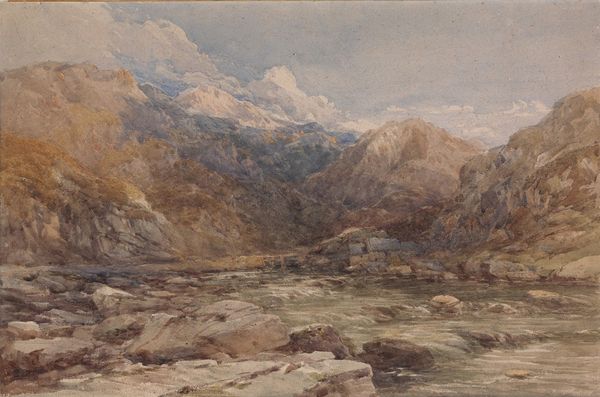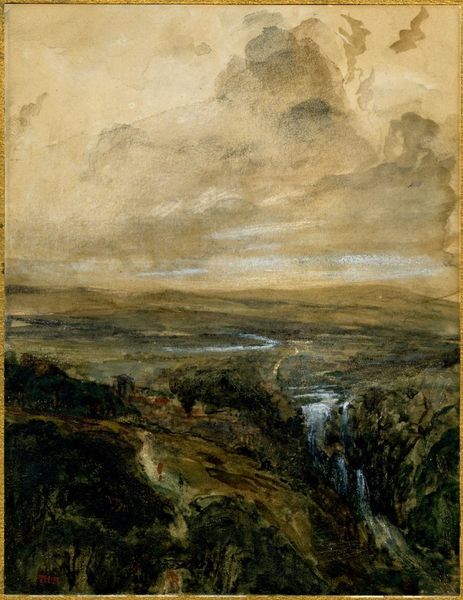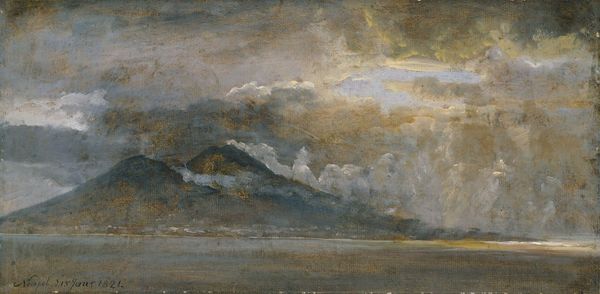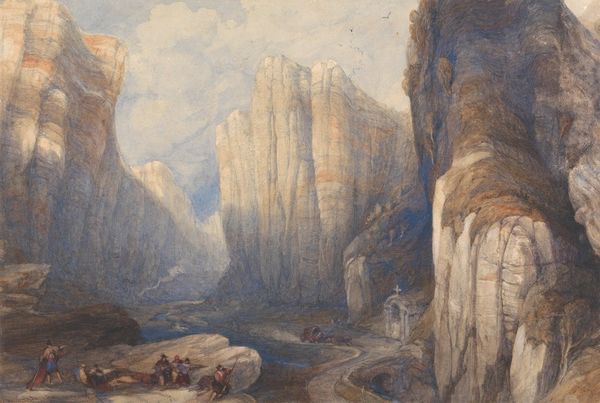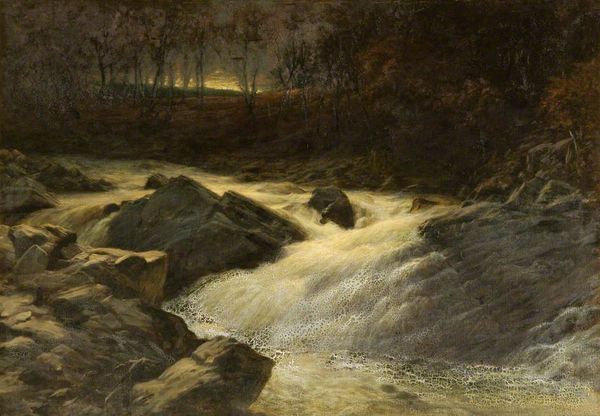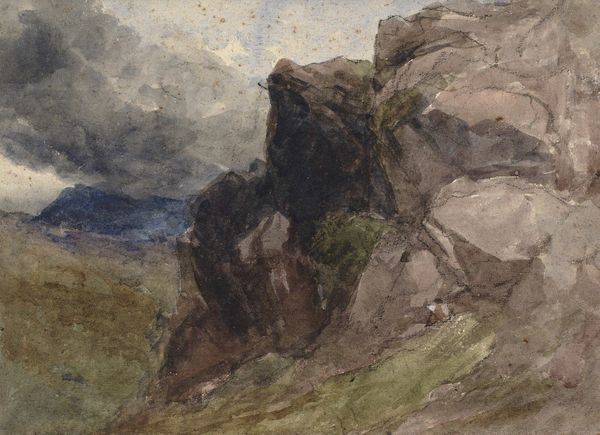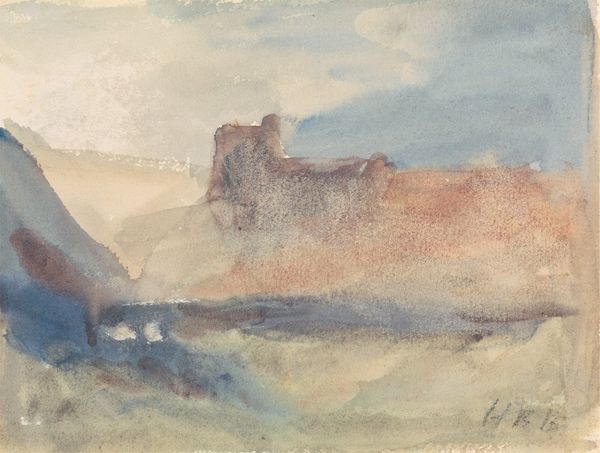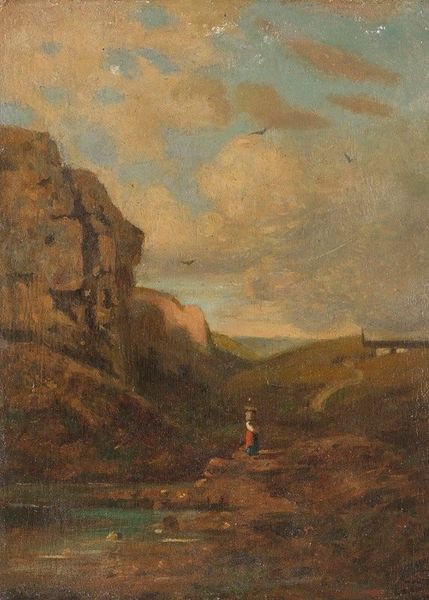
Copyright: Public domain
Curator: "Beyond Man's Footsteps" is the name, a landscape oil painting completed in 1894 by Briton Riviere. Editor: It’s stark, isn't it? Sort of a quiet apocalypse in shades of grey and fading gold. Makes you shiver just looking at it. Curator: Absolutely, a very somber work. Riviere often explored themes of humanity and animal companionship, and the canvas presents a solitary polar bear positioned atop what appears to be a desolate, icy terrain. Note how the high horizon emphasizes its vulnerability. Editor: It really gets you, doesn’t it? Like a monument to loneliness, but also resilience. The way the light catches the edge of that cliff... it’s not just ice, it’s carved by weather, time and untold stories, and it looks really menacing. Curator: Exactly. The visual elements all point to a specific reading: a stark commentary on environmental impact and its impact on animal life. The landscape seems primordial but degraded. The artist's style blends realism and romanticism to depict a harsh landscape as beautiful. Editor: And the bear itself? Isolated, yes, but also regal. Like it's surveying its lost kingdom, with a bit of, shall we say, attitude? Riviere really knew how to infuse emotions into what some see as a "simple" visual element of this oil paint on canvas. It transcends realism to suggest a fable or myth of survival in a dying world. Curator: Agreed. Through composition and technique, the artwork speaks to issues still pressing today – and that's probably why the piece endures beyond just its raw artistic talent, no? Editor: Perhaps, that's a testament to the brilliance of Riviere and its capability to speak beyond epochs. "Beyond Man's Footsteps" is a painting, yes, but above all, a potent question mark placed at the foot of our so-called progress. A solemn viewing experience indeed.
Comments
No comments
Be the first to comment and join the conversation on the ultimate creative platform.

